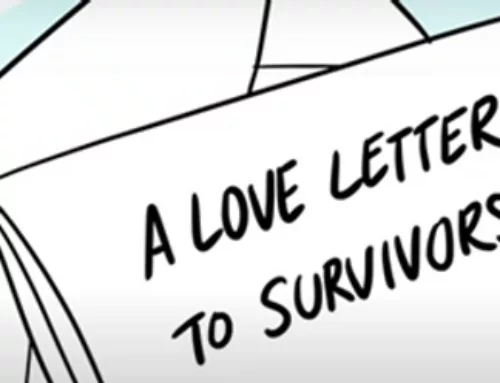If you’d prefer to watch rather than read, here’s the video for this topic by Alex 🙂
For many of us, conflict is scary and something to be avoided at all costs. But conflict is a normal part of any relationship because people are human and can’t be expected to agree on everything all the time. Learning to deal with conflict in a respectful and positive way can not only support your mental well being, it can support healthy relationships with those closest to you. One important part of dealing with conflict in a healthy way is developing skills in de-escalation or ‘calming things down’.
First off, if you feel you’re in danger or if you feel that trying to de-escalate the situation will result in possible harm to yourself and others, it’s better to get yourself safe and out of harm’s way. In these types of conflict situations, fall back on safety plans you’ve developed, call 911 in an emergency, or a crisis line if you feel you need immediate support.
However, if the only thing you’re afraid of in a particular situation is just that you’re both getting into an argument about something, de-escalation may be a way to address the situation. Some of the skills you’ll need include:
- being aware of your own emotions;
- actively listening;
- attending to non-verbal communication;
- using humour.

Emotions: It’s easy to become overwhelmed in challenging situations and lose control of your emotions. When you feel an argument starting, first realize you’re getting stressed/ anxious/frustrated and try to self soothe. Self soothing is pretty much what it sounds like: it’s an opportunity to soothe ourselves into a calmer state. Babies suck their thumbs but that may not be right for you 🙂 However, you can focus on your senses in the moment:
- Technique #1: name 5 things you see, 4 things you hear, 3 things you can touch/feel, 2 things you can smell and 1 thing you can taste.
- Technique #2: take 3 slow and deep breaths while you think about the air going into and out of your body.
Calming or self soothing allows you to connect with your emotions, allowing you to manage them in a healthy way. This puts you in a position to be able to consider all the options rather than having to ‘win’/’be right’ and avoiding tunnel vision on a particular issue.
Active Listening: Once we’re calm, it’s much easier to practice listening. By listening attentively, we can hear our partner’s concern(s) rather than being distracted by our own thoughts, emotions, or our own rebuttals. When deescalating conflict, it is important to remain empathetic, even if you don’t agree with everything your partner is saying. Empathy helps us understand why our partner feels the way they do and leads us to coming up with better, more effective resolutions. By listening, you’re also not engaging in escalating the conflict as you’re allowing the other person to say what they feel they need to say without interruption. How can you demonstrate active listening?
- asking clarification questions without making judgements on what’s being said;
- repeating what you thought you heard and asking if that’s what they meant?;
- asking open ended question to clarify and get a better understanding.
Non-verbal communication: Your body, the way you stand, the way you hold yourself, the expressions on your face, all communicate things without you needing to say a word. And when you do speak, your tone of voice, your gestures, and your attitude all convey things to your partner. When conflict arises and you’re in a safe space and you’re calm, you’ll notice your partner’s non-verbal communication much more. You’ll also be more aware of your own non verbal communication. Consider de-escalating your unspoken communication by:
- relaxing your shoulders and your hands;
- trying to speak in a calm tone without going too fast – maintaining an even volume;
- maintaining enough personal space (‘don’t get up in their grill’!);
- avoiding pointing at each other or crossing your arms or taking a defensive stance;
- adjusting the expression on your face – while trying to smile in the middle of a conflict may be insincere (and not a good idea), you can still try for ‘concerned’ and ‘calm’.
Humour: Think about the last time you laughed. Humour is one of those things that can reduce tension in a room quickly and put problems into perspective. Of course, you’d only use humour in a situation where you felt and were safe. And keep in mind, you want to make sure you’re laughing with your partner, not at them. When you both share the same type of humour and can laugh at things together, you remind yourself of the connection you share. Sometimes, pointing out the ridiculousness of the conflict can make you both have a giggle. Sometimes, you can look at your own behaviour and point it out (just don’t point out something to ridicule about their behaviour – let them do that). Humour is a very personal thing and only you’ll know your partner well enough to use it. But finding more ways to laugh in your relationship (again not at them but with them or at yourself), does help in avoiding or minimizing conflict altogether in many situations.
Conflict is normal and can often be managed in positive ways. Practicing these techniques is a great opportunity to build healthy relationships with those we care about.


